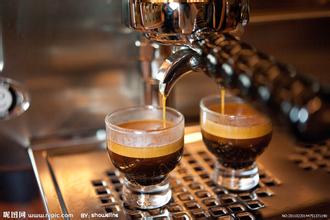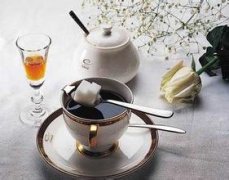A brief introduction to the market price of pure slightly sour Salvadoran boutique coffee beans

Located in Santa Ana, a famous production area in the Apaneca Mountains at an altitude of 1500 meters, Himalaya Manor is one of the few manors managed by Aida Batlle. The varieties planted are mainly bourbon
Washing treatment method consumes too much water, pollution is serious, so there is a semi-washing method, it refers to the coffee fruit first by the sink to remove defects floating fruit, and then remove part of the colloid layer, and then wash for an hour, due to the short soaking fermentation time, the bean shell still has pectin residue, at this time, coffee beans will be spread in the sun field to dry.
Semi-washed coffee has the consistency and sweetness of sun-dried beans, but also has the cleanliness and softness of washed beans, making coffee taste better. El Salvador coffee is tied with Mexico and Guatemala as the producing countries of Asa and Meldo, and is competing with other countries for the top one or two places in Central America. Highland origin, for the size of large coffee beans, fragrant taste mild. As in Guatemala and Costa Rica, coffee in El Salvador is graded according to altitude, with the higher the altitude, the better the coffee. There are three grades according to altitude: SHB (strictly high grown)= high ground, HEC (high grown central)= medium high ground, CS The best brand is Pipil, Aztec-Mayan name for coffee, which has been certified by the Organic Certified lnstitut eof America Flavor: balanced taste, excellent texture
Recommended baking method: medium to deep, with multiple uses
Top quality beans: Salvador SHB
Taste characteristics: sour, bitter, sweet mild moderate
Bourbon is already the largest variety in Saudi Arabia, with a national planting rate of up to 60%. The fruit of Bourbon in Saudi Arabia has four colors, red and yellow orange, and a small amount of pink bourbon. Pacamara is a new variety of large grain, which is artificially cultivated by Pacas and Elephantou. Pakamara originated in Sa, but its production is much less than Bourbon. The Saskatchewan Coffee Committee promotes Saskatchewan Bourbon beans with the marketing slogan of smiling drinking, plus the logo of smiling, and strengthens the impression of Saskatchewan strong and good beans with Pakamara, which is constantly in the limelight in the Cup of Excellence. The two varieties compete for the championship title in the national competition. The top ten finals of the Cup of Excellence each year, Bourbon vs Pakamara, which variety is the champion? The constant discussion also caused neighboring countries to follow the trend of scrambling to seed Pakamara.
Pacamara is full of flavor and rich and varied, which is rare in other varieties. For example, in addition to fruity and rich taste, it also has many variations such as apricot, vanilla, tropical fruit, chocolate and spice sweetness. But there are two good things, mature pacamara coffee trees will show a gradual decline in yield or occasional instability of flavor, soil and microclimate requirements are also high, planted in the wrong place, will be slightly less clean and have a bad wood smell. Honduras 'Cup of Excellence winner Santa Marie Manor has analyzed with me that vendors who like Pacamara varieties of baked beans should choose products and estates carefully to avoid stepping on the mines of the old bear Pacamara.
Since 2006, in the process of bean hunting and bean marking, I and the international judges of Osher have tested the Pacamara species of 30 high-quality estates. In fact, there are many superstars in the fine coffee circle, including Santa Marie, champion of Honduras in 2006, Montenegro Estate, third place of Guatemala in 2007, and Pacamara Estate, second place of Guatemala in 2008. Including, of course, the 2012 champion of Saudi Arabia, Bloomas Manor.
Star variety is difficult to serve
When it comes to the Pakamara species in Sa, we must first introduce Pakamara Manor. In 1984, Farnesco, Ecuador, bought the Pacamara coffee plantation and became the new owner. The Farnesco family has been cultivating coffee in the Apaneca Mountains for more than 100 years since their grandparents. Ecuador wanted to go a different way from his grandparents, so he decided to plant a new strain of pacamara, which had just been developed by the agricultural technology unit of Saudi Arabia. He found that this new strain had a large and beautiful appearance, and under good terroir conditions, it could display good flavor and aroma. He found new hope, found the star of the future in mind, did not expect the first harvest is the beginning of hard work.
Pacamara beans are too large and often get stuck in holes or gaps in the machine during peeling and separation in the processing yard. The machine must be adjusted from time to time for separate processing. Due to the limited initial yield of Pakamara and the rarity of large fruits in Samoa, most washing plants lack experience in handling large coffee fruits, not to mention preparing extra large mesh screens to specifically handle Pakamara species, and naturally are reluctant to handle new species. The problem of post-harvest wet treatment was solved only when the Avasan Cooperative in 1990 showed goodwill and agreed to sign a contract with Ecuador. Ecuador has no worries, with more skilled planting techniques, harvesting coffee cherries with consistent maturity, and careful post-harvest treatment, finally let Pakamara seeds of Pakamara Estate shine! 24 in 2003, 7th in 2005 and runner-up in 2008. That year, it was me and Maruyama Coffee of Japan who jointly bid for this runner-up batch.
The introduction of new varieties is ultimately a laborious and high-risk attempt, not to mention the high probability of failure, if successful, everyone will follow, but if you do not try to innovate, you will never wait for the opportunity to succeed, coffee farmers all kinds of suffering, not to outsiders
Coffee fields are endless, and most of them are harvested mechanically to meet economic benefits. When 75% of the coffee fruit in the coffee garden turns red, the mechanical harvesting is started, followed by the same pre-operation of washing, which is transferred to the sink to remove the floating beans, sifting out the sunk beans, and then using a large pulp sifter to remove the pulp and remove the pods covered with pectin. The next stage is separate from the washing method: instead of moving the sticky pods to a tank for fermentation, they are moved to an outdoor drying field. Due to the dry climate in Brazil, the sticky pectin on the pods hardens in about a day. Then use a lot of manpower to turn up and down, so that the pod evenly dry inside and outside, so as not to regain moisture and stink, about two to three days with the help of sunlight and dry climate natural forces, the pod can reach a certain degree of dehydration. Then further drying in a dryer to reduce the moisture content to 10.5--12%, and then storing the pods in special containers for about ten days, further ripening, in order to stabilize the quality, before export and then grinding off the sheepskin (i.e. pods), take out the coffee beans, graded packaging.
Important Notice :
前街咖啡 FrontStreet Coffee has moved to new addredd:
FrontStreet Coffee Address: 315,Donghua East Road,GuangZhou
Tel:020 38364473
- Prev

A brief introduction to the History and Culture of the Origin and Development of El Salvador Fine Coffee beans
Semi-washed coffee not only has the consistency and sweetness of sun beans, but also has the cleanliness and softness of washed beans, making the taste of coffee better. Salvadoran coffee ranks side by side with Mexico, Guatemala as the producer of Asa and Merdo, and is fighting for the top one or two places in China and the United States with other countries. The highlands of origin are large coffee beans of all sizes, which are fragrant and mild in taste. And dangerous land
- Next

A brief introduction to the cultivation of evenly dried boutique coffee beans in El Salvador, geographical location, climate and altitude
Coffee fields are endless, and most of them are harvested by machinery, which is in line with economic benefits. When 75% of the coffee fruit in the coffee garden turns red, mechanical harvesting is started, followed by the same pre-washing operation, which is moved into the sink to remove floating beans, sift out the sunken beans, and then use a large pulp screening machine to dig out the pulp and remove the pods covered with pectin. The next stage is separated from the washing method: sticky beans.
Related
- Detailed explanation of Jadeite planting Land in Panamanian Jadeite Manor introduction to the grading system of Jadeite competitive bidding, Red bid, Green bid and Rose Summer
- Story of Coffee planting in Brenka region of Costa Rica Stonehenge Manor anaerobic heavy honey treatment of flavor mouth
- What's on the barrel of Blue Mountain Coffee beans?
- Can American coffee also pull flowers? How to use hot American style to pull out a good-looking pattern?
- Can you make a cold extract with coffee beans? What is the right proportion for cold-extracted coffee formula?
- Indonesian PWN Gold Mandrine Coffee Origin Features Flavor How to Chong? Mandolin coffee is American.
- A brief introduction to the flavor characteristics of Brazilian yellow bourbon coffee beans
- What is the effect of different water quality on the flavor of cold-extracted coffee? What kind of water is best for brewing coffee?
- Why do you think of Rose Summer whenever you mention Panamanian coffee?
- Introduction to the characteristics of authentic blue mountain coffee bean producing areas? What is the CIB Coffee Authority in Jamaica?

